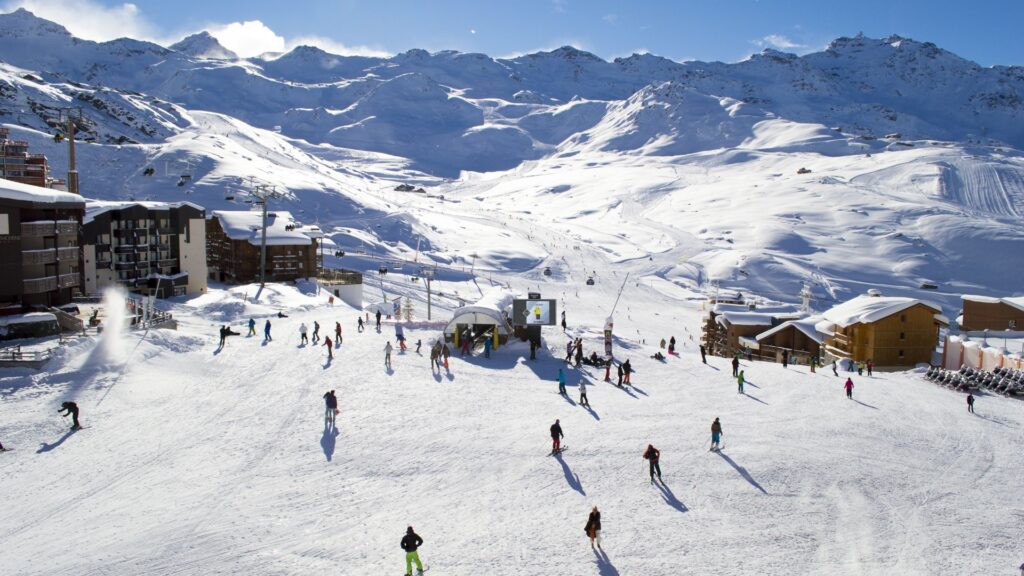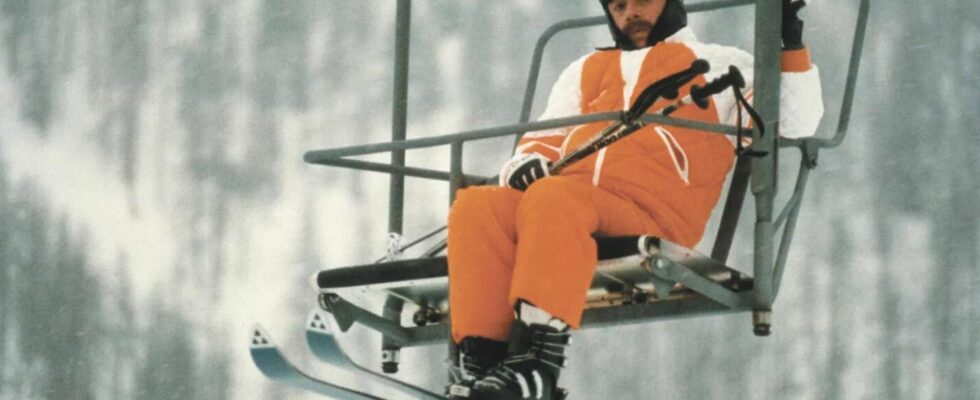Skiing raises questions as humanity faces climate change. Will we still be able to ski in Europe in a world at +2°C? 3 scientists tackle the thorny subject in The Conversation.
In recent months, the raison d’être of winter sports has seemed more threatened than ever by various controversies. Whether with the occupation by activists of the Girose glacier, in the Écrins massif, in Isère, to denounce plans to build a new cable car, or the questioning of the organization of events sports in pre-season following the partial destruction of the Théodule glacier, in Switzerland. Behind these militant actions the same question: what future for skiing in an overheating planet?
If in recent decades, France has seen certain ski resorts close due to lack of snow or a sustainable economic model, most resorts are instead hoping to adapt to rising temperatures. But will the reproduction of recipes that have proven successful in the past make it possible to face the challenges raised by climate warming?
Through the unprecedented study of 2,234 winter sports resorts in Europe published in Nature Climate Change, we tried to measure the impacts of global warming on the snow cover of the resorts, and the possible margins of maneuver available to these resorts. to adapt.
This question does not only answer a concern for amateur or professional skiers. Skiing is also an economic issue, with a total turnover estimated at 30 billion euros in Europe, and 120,000 jobs directly and indirectly dependent on the ski economy in France alone.
Half of the resorts would lack snow at +2°C of global warming
A global phenomenon, climate change does not spare any resort, but not all mountain ranges are affected with the same intensity or the same speed, and the capacity to limit the impacts of these changes through snow production is limited. also very contrasting. We estimated the consequences of climate change on winter sports resorts based on possible levels of global warming, using the graphic representation, commonly used in IPCC reports, of “burning embers”.
At +2°C of global warming compared to the reference period 1850-1900, i.e. the level of warming expected in the middle of the 21st century, 53% of stations on a European scale are affected by a risk very high level of low snowfall, without snow production. We assess the risk of low snowfall based on the frequency of snow conditions considered to be the most unfavorable, those encountered on average one season in five between 1961-1990, the golden age of resort development. A “very high level of risk” corresponds to the return of these unfavorable conditions every other season.
However, we note contrasting variations on a national scale: in the French Alps this proportion concerns a third of the stations while in the Pyrenees and in the French-Swiss mid-mountain massifs these are respectively 89% and 80% of the stations concerned by a very high level of risk of light snowfall.
At +4°C of global warming, 98% of European resorts are affected by a very high risk of low snowfall, without snow production. With such a level of warming, the climate leaves little room for adaptation to winter sports resorts.
Artificial snow will not be a miracle solution
To adapt to the trend of decreasing snow cover, today, one of the most put forward solutions is the production of snow, described by some as “artificial snow” and by others as “snow. artificial”. Snow production involves projecting micro-droplets of water into the atmosphere so that they freeze before falling to the ground. The snow thus obtained, made up of small balls of ice, is a suitable material for making an underlay.
In the past, snow production was mainly aimed at limiting the impact of natural fluctuations in snow cover from one season to the next. Snow is today mainly produced before the season, without knowledge of the weather conditions of the coming winter, then more punctually if necessary between the Christmas and winter holidays, crucial for economic activity, as well as only to ensure the opening of the ski area until the end of the season.
Like natural snowmaking, snow production is affected by increasing temperatures because snow production requires sufficiently cold weather conditions. This double pressure leads to increasing investments to guarantee the possibility of producing snow in sufficient proportions, thereby increasing the dependence of mountain resorts on snow tourism. The risk associated with this dynamic is that of maladaptation, that is to say an adaptation solution responding in the short term to problems amplified by climate change, but leading to structurally increased vulnerability to hazards.
For ski tourism, this corresponds to a situation in which the economic weight of the investments made comes up against the recurrence of unfavorable operating conditions, which do not, in the long term, make it possible to support the production tool. Ultimately, the danger is to drive to a breaking point, with the collapse of the winter sports economy having repercussions on local development dynamics.
Not all ski resorts will be able to adapt in the same way
If resorts are unevenly affected by climate change, they are also more or less able to adapt to rising temperatures by producing snow. At +2°C of global warming, snow production, if implemented on 50% of the slope surface, makes it possible to reduce the share of resorts exposed to a very high level of risk to 7% and 9%. low snowfall in the Alps and the Pyrenees while in the mid-mountain massifs this proportion is 56%. These differences are even more marked at higher levels of warming.
However, it must be remembered here that if the level of snow cover is decisive for the socio-economic viability of a winter sports resort, it does not constitute a guarantee in itself of the sustainability of a resort: d Other determining criteria exist such as the state of the ski lift fleet, the promotion/marketing methods, or the accommodation capacity and their attractiveness. We cannot therefore directly conclude from figures characterizing the risk of low snowfall, the proportion or number of resorts likely to cease their ski activities.

Furthermore, although snow production has a substantial positive impact on improving the operating conditions of ski areas, this does not necessarily make it a generic solution, applicable in the same way, whatever the ski area. . Our study also shows that the marginal gain in areas covered by snow production facilities does not always meet expectations.
Beyond 50% of surface area covered, the efficiency of additional means of production often appears less than the benefit of the first investments, and the desire for equipment must be looked at with even more attention, particularly in relation to the costs that this implies: economic for the operator, but also environmental, both with regard to pressures on ecosystems, water and electricity needs, but also according to the choices of resource allocation and the adaptation of other activities than those of the ski area.
Producing snow emits carbon
In addition, snow production is not free from carbon emissions, a component that must therefore be kept in mind before establishing this technique as the ultimate response to reducing snow cover.
We therefore also calculated the necessary water requirements, the production and the energy demand it implies, the carbon footprint of the electricity used for snow production. Over the reference period (1961-1990), the total quantity of snow produced on the slopes covered by the installations represents 13% of the total precipitation which falls annually on these same slopes. Considering 50% coverage of the tracks by production equipment, the total volume should experience growth of 8% to 25%, depending on the country, for a warming of +2°C, more for a more marked warming .
In addition, this demand tends to shift over time with lower production in November, due to the reduction in cold windows favorable to production at the start of winter. Thus, it is likely that the services provided by snow production will not be the same as in the past, which risks further weakening snow cover during the end-of-year holidays.
In all cases, the total volume of water potentially mobilized remains moderate, and a large part of this water is returned to watercourses at the time of melting. However, this does not prejudge delicate situations at the local scale, depending on uses (including the needs of ecosystems) and the methods of harvesting the resource and the evolution of mountain hydrology in connection with climate change and the evolution of the contribution of the cryosphere.
Similarly, the carbon footprint of the electricity used for snow production, of the order of 80 kt CO eq2 and with a growth comparable to that of the need for water as a function of warming, remains limited, even if it varies greatly depending on the energy mix of the different countries (for example Norway, with an increase of +30% in gas emissions at greenhouse effect at +2°C maintains one of the lowest carbon footprints in all climates combined, compared to the carbon intensity of current energy mixes).
Let’s not forget the transport and accommodation of skiers
However, it is not possible to detach snow production from the tourist activity that justifies it, even if it is intrinsically responsible for only a few% of the carbon footprint of a winter sports tourist destination. , dominated by transport and accommodation for skiers (as a whole the tourism sector represents 11% of greenhouse gas emissions at the national level (8% at the global level).
Therefore, in a context of climate change, this raises the question of the evolution of mobility in the face of the scarcity of skiable sites and the need to ensure the functioning of skiable areas, the management of which is becoming more and more complex. and critical in view of the deterioration of natural snow conditions.
The associated risk is indeed that of the increase in carbon emissions from ski tourism justifying increasingly distant trips. But is this compatible with the future of this activity and the economic and social development of mountain areas particularly vulnerable to the erosion of biodiversity and global warming? Our study shows the need to combine adaptation and decarbonization in the tourism sector, without focusing exclusively on just one of the dimensions of this major challenge.


Hugues François, Tourism and information system research engineer, Inrae; Raphaëlle Samacoïts, Climatology and climate services engineer, Météo-France and Samuel Morin, Researcher and director of the National Meteorological Research Center (Météo-France – CNRS), Meteo France
This article is republished from The Conversation under a Creative Commons license. Read the original article.
Subscribe for free to Artificielles, our newsletter on AI, designed by AIs, verified by Numerama!
